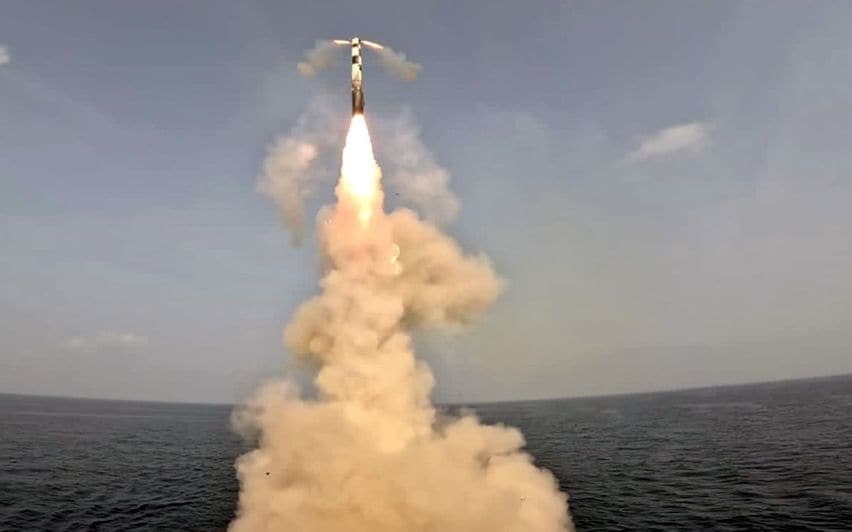India tests 4000-km+ range Nuclear-Capable Submarine launched missile

India has successfully conducted a test of its K-4 submarine-launched ballistic missile (SLBM) capable of carrying nuclear warhead, from the newly commissioned INS Arighaat.
This test was carried out on November 27, 2024, in the Bay of Bengal near Visakhapatnam. This not only validates its second-strike capability against a surprise nuclear strike from China or Pakistan but also marks a significant advancement in India’s nuclear deterrence capabilities against targets at greater ranges.
The claimed range of K-4 missile is said to be of 3,500 kilometers, but everyone knows that as the name suggests, the missile has a range of 4000 KM+.
Thus allowing it to easily strike deep into regions within China and all of Pakistan from anywhere in Bay of Bengal.
The missile designed to carry nuclear warheads is powered by solid fuel, ensuring reliable performance during launches.
The INS Arighaat is India’s second nuclear-powered submarine, following the INS Arihant. It is equipped to carry four K-4 missiles or twelve K-15 missiles, significantly enhancing India’s sea-based nuclear deterrent capabilities.
This submarine was inducted into service in August 2024 and represents a forward move in India’s strategic defence posture. With the commissioning of third SSBN, it can be ensured that atleast one SSBN is always on operational deployment.
The successful launch of the K-4 missile underscores India’s commitment to maintaining a credible nuclear deterrent.
Submarine-launched systems like the K-4 are particularly valuable as they can remain hidden underwater, making them difficult for adversaries to detect and neutralize.
This capability ensures that India can respond effectively even after a potential first strike.India plans to conduct additional tests of the K-4 missile system to re confirm all parameters.
The successful integration of this missile into the Indian Navy’s arsenal will further strengthen the nuclear triad, which includes land-based missiles and air-launched nuclear weapons, thereby ensuring a robust retaliatory capability in case of a nuclear conflict.
India’s development of a credible second-strike capability, particularly through its submarine-launched ballistic missiles (SLBMs) like the K-4, has significant strategic implications for regional security dynamics, especially in relation to its adversaries, China and Pakistan.
The next SLBM must be with a range of 8000 km to match land based Agni 5.The successful testing of the K-4 missile from the INS Arighaat enhances India’s nuclear triad.
This diversification of delivery systems is crucial for ensuring that India can retaliate effectively in the event of a nuclear strike, thus reinforcing its deterrent posture against potential aggressors.
India’s second-strike capability is designed to maintain a strategic balance in South Asia, particularly against the backdrop of China’s growing military capabilities and Pakistan’s pursuit of full-spectrum deterrence.
By enhancing its sea-based deterrence, India positions itself as a stabilizing force in the Indian Ocean Region (IOR). The development of advanced SLBMs like the K-4 also reflects technological progress in indigenous defence production.
This self-reliance in defence technology strengthens India’s position as a responsible nuclear power and enhances its military readiness as a major player in a multipolar world.
The deployment of SSBNs serves as a powerful strategic signal to all global actors about India’s commitment to maintaining a credible deterrent.
It underscores India’s resolve to protect its national interests and maintain stability in an increasingly multipolar world where nuclear capabilities are a critical factor in international relations.
India’s second-strike capability through submarine-launched missiles like the K-4 represents a pivotal enhancement of its strategic posture.
While it bolsters deterrence and global stability, it also helps in reducing miscalculations and unintended escalations by others.




